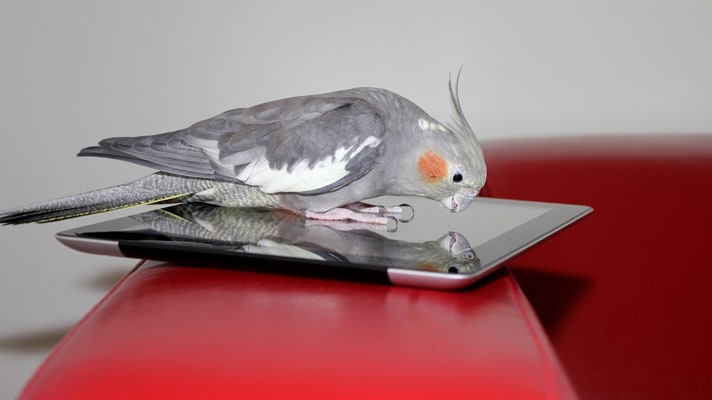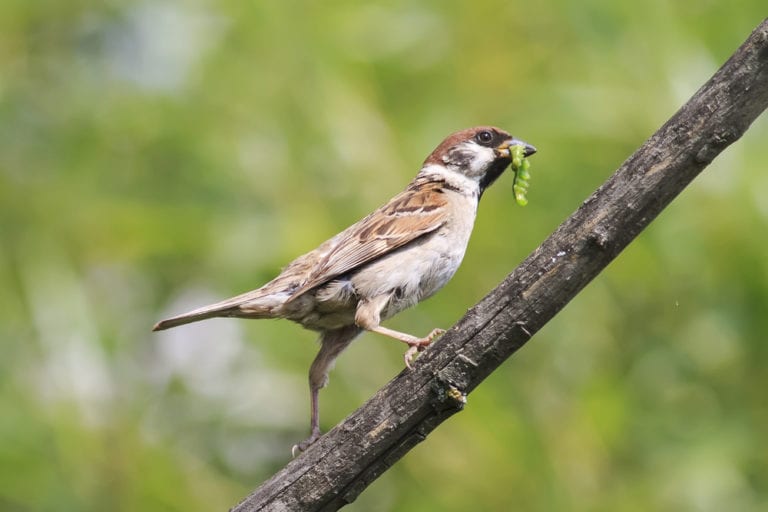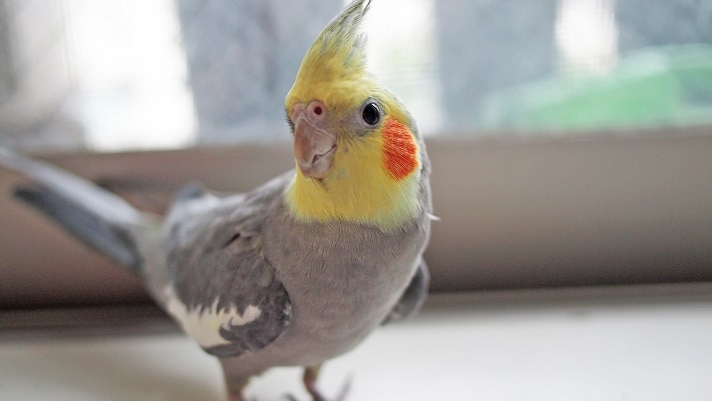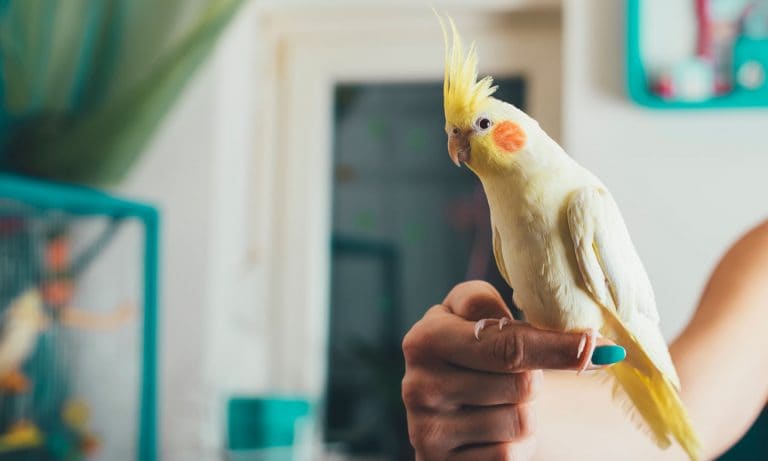1. Is a cockatiel a parrot?
Yes, cockatiels are parrots. Cockatiels (Nymphicus hollandicus), have the characteristic features of parrots: a curved hookbill and zygodactyl feet (two toes pointing forward and two pointing backward). These small parrots are native to Australia, and are closely related to cockatoos.
2. What bird food should I provide for my cockatiel?
Good bird foods to feed cockatiels are a teaspoon of bird seed along with a formulated cockatiel bird food (pellets) and sprouted seed, supplemented by healthy vegetables and healthy table foods (e.g., whole-wheat bread, pasta, plain mashed sweet potato, and small bits of fruit.)
3. Do cockatiels talk?
Although cockatiels don’t say as many words as other parrot species, cockatiels can learn to mimic words and phrases. Male cockatiels are more likely to talk than female cockatiels. Find out how to teach your bird to talk here.
4. What kind of bird cage should I get for my pet cockatiel?
Cockatiels are active pet birds, so your cockatiel needs spacious bird cages. Opt for a bird cage that is at least 24 inches wide by 24 inches tall with ½ to 1-inch bar spacing. Look for a bird cage that is easy to clean and maintain (pull-out tray, food and water dishes that are accessible from outside the bird cage). Your pet cockatiel needs more than just a bird cage, though. It needs bird perches, bird toys, a bird stand and more!
5. Is my pet cockatiel male or female?
In normal gray cockatiels, male cockatiels have a richer gray color and brighter orange cheek patches than female cockatiels. Female cockatiels also typically have barring on the tail feathers. A color-mutation cockatiel’s gender (such as a pied cockatiel) is more difficult to determine visually, so you may need to have a DNA test taken to be certain. Some bird aviculturists point out behavioral differences between male cockatiels and female cockatiels. Male cockatiels tend to talk and whistle more and female cockatiels have a reputation for being more docile.
6. Which makes the better pet bird: a male cockatiel or female cockatiel?
Both male cockatiels and female cockatiels make great pet birds. Typically, male cockatiels are better whistlers and talkers than female cockatiels. With a female cockatiel, be aware of potential parrot health issues, such as chronic egg laying and egg binding.
7. How can I tell if my pet cockatiel is sick?
The biggest sign that your pet cockatiel might be sick is a change in behavior. A healthy pet bird is active and alert: eating, playing and vocalizing. A pet cockatiel that sleeps a lot or sits fluffed up in the corner of the bird cage could be sick. If there is even a slight change from normal cockatiel behavior or if your cockatiel shows other signs of illness, your pet bird could be sick. If your pet cockatiel is sick then take it to an avian veterinarian as soon as possible.
In general, cockatiels (and all pet birds, as well as wild parrots) do not show obvious signs of illness. This is a defense mechanism. In the wild, a sick bird or parrot is a target for predators, so all birds (wild birds and pet birds) do everything they can to mask their sickness.
8. Can I get a parakeet (budgie) for my cockatiel?
You can; however, consider the following. Parakeets (budgies) are more aggressive than the larger, gentler cockatiel. In the same bird cage, a parakeet (budgie) might boss around a cockatiel and chase it away from the bird food bowl or perch.
If you want to have a pet parakeet (budgie) and a pet cockatiel in the same bird cage, introduce them slowly, and see if they get along. This means keeping the parakeet (budgie) and cockatiel in separate bird cages, and seeing if they look eager to become friends. If they do, then you move on to placing them in the same bird cage. Supervise your parrots closely for the first week or so.
9. How can I get my pet cockatiel to step onto my finger/ let me pet it?
At first, it might be hard to get your cockatiel to step onto your finger willingly. The cockatiel might hiss or bite you, because it is afraid.
If your cockatiel hasn’t been socialized, you must gain your cockatiel’s trust. Start by getting your cockatiel used to your presence, either by sitting near the cage and not making eye contact, or singing to it. Once your pet bird seems comfortable around you, start offering its favorite treat, so your cockatiel associates you with good things! From there, you can start encouraging your pet bird to step up onto your finger, and then work on petting it. Soon, you will have a tame cockatiel!
10. Can my cockatiel be friends with my cat or dog?
Cats and dogs are natural predators and their hunting instincts might be triggered by your flighty, noisy pet cockatiel. Never leave your other pets alone with your pet cockatiel while your cockatiel is outside its bird cage and pet-proof your cockatiel’s environment.
Posted by: Chewy Editorial
Featured Image: bo-rmotalka/iStock/ThinkStock
Share:









